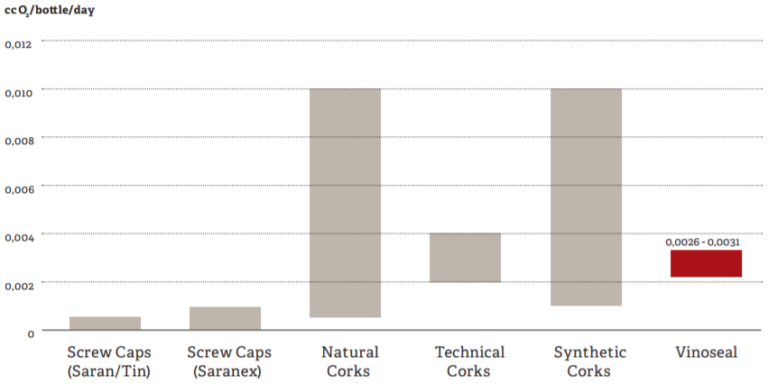Did You Know…
That glass, the main part of the Vinoseal closure, is infinitely recyclable without any loss in quality? It can be melted repeatedly and transformed into new Vinoseal closures or other glass products.
Oxygen Transfer Rate
Even the sealing ring is recyclable in the same way as low-density polyethylene (used in juice and milk cartons). The result is a one hundred percent recyclable closure. This makes glass the archetype of sustainable packaging and as such is usually the first choice for environmentally conscious consumers.
Four percent of all the world’s wines (and likely more!) under cork are tainted by a class of compounds called haloanisoles, which is otherwise known as “cork taint.” These compounds have the aromas of musty”, “wet cardboard” or “moldy”. These compounds won’t hurt you, but it will hurt the aroma and flavor of the wine. When using Vinoseals, the chance of the wine being “corked” decrease dramatically.
The plastic gasket that creates the seal to the bottle is made to allow micro-oxidation of the wine. This means wines under Vinoseal age just as well as the highest grade of cork closures. Another plus is you do not have to worry about a cork drying out and having to lay the bottle on its side!
How to open a bottle of wine corked with a vinoseal

